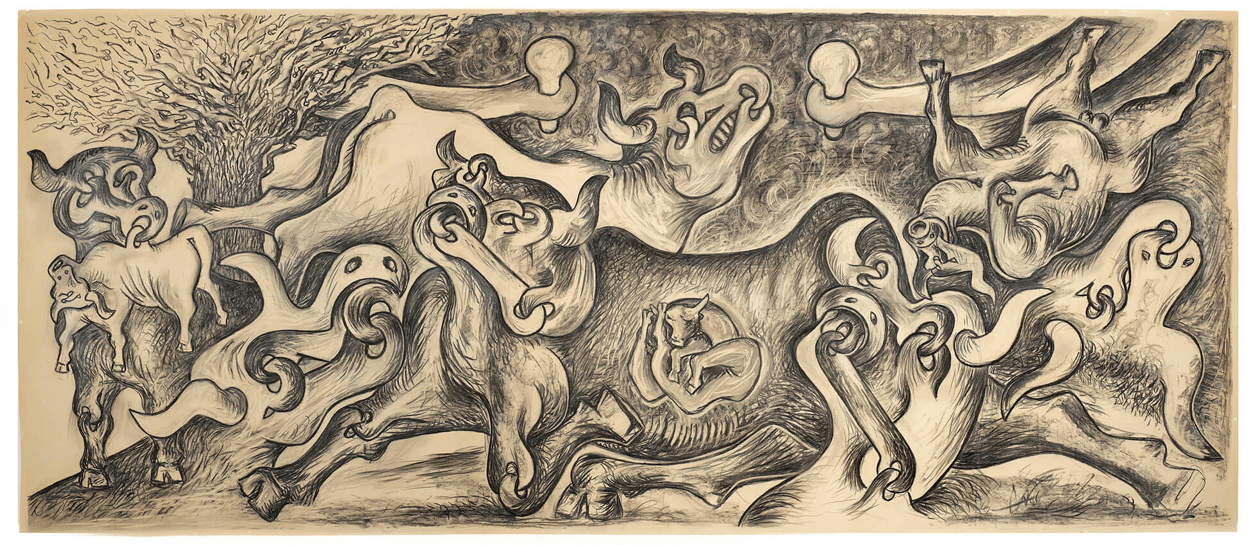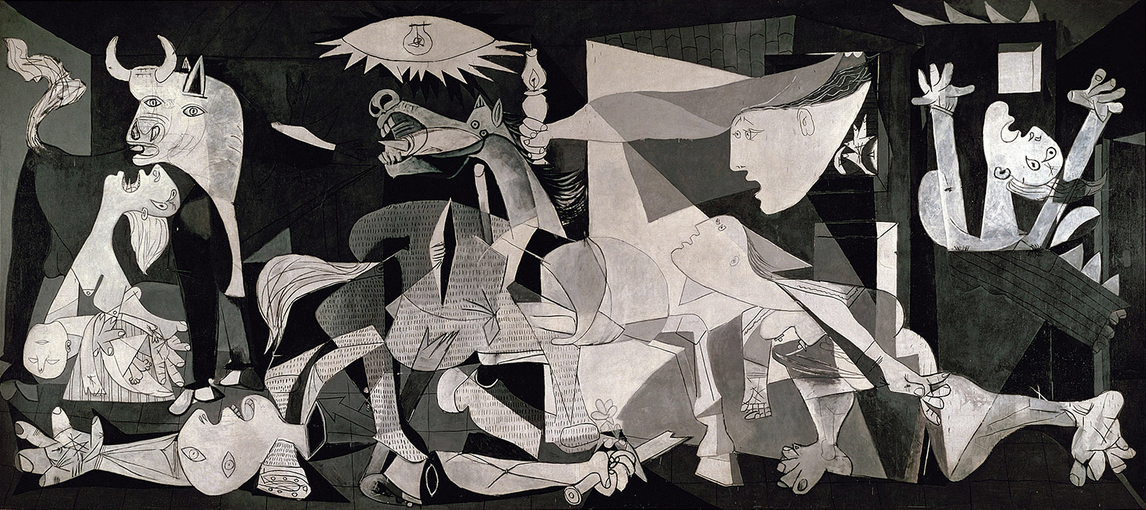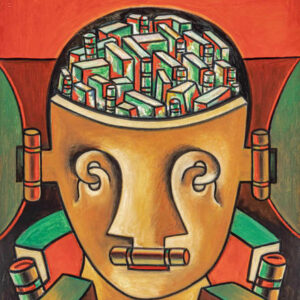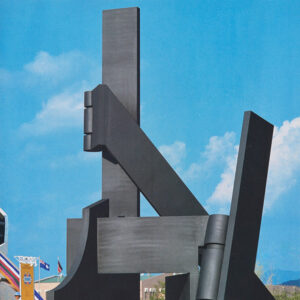Targets (Study after Guernica) 1969

Sorel Etrog, Targets (Study after Guernica), 1969
Graphite on paper, 150 x 366 cm
The Estate of Sorel Etrog
Targets (Study after Guernica) is a large black and white drawing that depicts nine bulls in various positions that express an all-encompassing distress and pain originating from an unclear source. The animals—or “targets” according to the title—are depicted through a disordered composition. At the drawing’s centre, a pregnant cow collapses while raising its head in a scream. In the top left corner an upside-down bull looks as if it is falling. On the right side, another carries a lifeless calf in its mouth while several fragmented bovine figures appear throughout the drawing, adding to the sense of confusion.

The title of the work reveals Etrog’s homage to Pablo Picasso (1880–1973). The two never met, but Etrog had admired the Spanish artist’s work since his art-school days in Tel Aviv. Like many before him, including Picasso himself, Etrog set out to reinterpret masterpieces of Western art in his own distinct style. As he later said, “After years of refining and solidifying my vocabulary… I was confident that it was personal enough to be able… to adapt, translate and make variations of some well-known masterpieces.”
In Targets, Etrog specifically refers to Picasso’s Guernica, 1937, which was on display at The Museum of Modern Art in New York when Etrog lived in the city. Guernica is an essentially black and white painting that combines a Cubist style and a Surrealist deformation of bodies to portray an air raid on a civilian population during the Spanish Civil War (1936–39). Picasso focuses on the bombing’s abrupt disruption of daily life in the Basque town by depicting the attack’s violent aftermath—a dead baby in his distraught mother’s arms, corpses strewn on the ground, figures being burned alive, as well as a bull fearfully witnessing the horror.
Etrog created the work during a particularly dark time in his life. In 1966 he had witnessed the flooding of the Arno River, which devastated Florence and brought back memories of the destruction that he himself had witnessed during the Second World War, and, in 1967, he was in a life-threatening car accident that would take many years to fully recover from. In 1969, after studying the bullfighting scenes in La Tauromaquia, 1816, a series of prints by Francisco Goya (1746–1828), Etrog embarked on a period of about two years during which the bull motif dominated his work, appearing in hundreds of paintings, sketches, studies, and fragments, as well some sculptures of varying sizes. Targets is the largest drawing of the period.
Etrog borrows Picasso’s scale, colour palette, and overall formal arrangement in Targets, interpreting Guernica to express his own anguish. First, he populates the composition with bulls in place of the human characters of the original. Second, using his Links style, which merges the organic and mechanical through repeated interlocking rounded forms, he blurs the distinction between figures and ground and between the figures themselves, creating an atmosphere of chaos and confusion. The motif of the link is also used to depict the bulls’ muzzles and jaws, thus producing repeated images of locked, unreleased screams. Finally, while Picasso’s composition responds to the fact that Guernica was bombed from the sky, Etrog avoids representing the source of the horrors and instead produces a visually chaotic composition of whirling forms and unclear boundaries, in which the danger seems to come from everywhere at once. Etrog’s Targets, while triggered by the artist’s personal experience, evokes universal suffering and tragedy.

 About the Author
About the Author
 More Online Art Books
More Online Art Books
 Acknowledgements
Acknowledgements